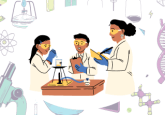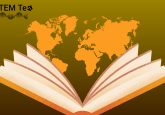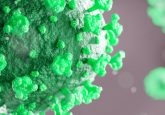Editor’s Picks | September
Our Assistant Editor, Aisha Al-Janabi, brings you her favorite news stories and interviews from September in this bitesize podcast to accompany you whilst you’re waiting for your centrifuge to run or your kettle to boil.
This month, we’ve got magnetic synthetic cells, the synthesis of the most complete artificial microbiome yet and how a key protein in human fertilization was identified.
Articles featured in this month’s episode include:
- Finding ‘True North’ for organoid development: how magnetic synthetic cells are guiding the way
- Identifying the molecular cause of rare genetic disorders
- AlphaFold computational modelling in drug discovery: the good, the bad and the AI
- Trust your gut… even when it’s synthetic
- Artificial fertilization reveals key protein in sperm–egg fusion
- Cultural codas: sperm whale dialects differ between clans
- Hippos can decipher their friend’s thunderous calls from a stranger’s
- Ask the Experts: Alzheimer’s fabrication controversy
Let us know which articles you enjoyed by tweeting us @MyBioTechniques and use #BTNEditorsPicks.
Hello! And welcome back to Editor’s Pick, brought to you by BioTechniques. Firstly, a huge thank you to Grace for hosting last month’s episode of Editor’s Picks, I’m sure you enjoyed it as much as I did. Now, as autumn makes itself known, and shops fill with Halloween and early Christmas essentials, it’s time to catch up on the latest news from September.
Join me, Aisha Al-Janabi, as I round up the weird, the wonderful and the incredible research going on in the life science community.
To celebrate Hispanic Heritage Month, we’ve been chatting to scientists about their research in a series of Q&As. First up, we spoke with Jacqueline De Lora whose research looks at how magnetic synthetic cells are guiding the way in 3D cell cultures. These magnetic synthetic cells have a lipid interface that responds to a magnetic field, allowing Jacqueline to control their morphology. We also spoke with Claudia Gonzaga-Jauregui who studies molecular diagnostics of rare genetic disorders using genome sequencing. Claudia also discussed the challenges of interpreting certain variants and the challenges caused by the underrepresentation of different populations in genomic databases.
Hispanic Heritage Month is not over, so be definitely check out BioTechniques later this month to see what we’ve got lined up.
In 2020, DeepMind released AlphaFold 2.0, which is an artificial intelligence model that can predict protein structures. To take full advantage of AlphaFold’s predictions, other computational models need to be designed and refined. Researchers from MIT tested an existing computer model that predicts the interactions between bacterial proteins and antibacterial compounds to see if it could be used alongside AlphaFold’s protein predictions. The lead author said the performance was essentially as effective as randomly guessing and was unable to consistently identify true interactions. However, they remain optimistic that AlphaFold and computer modeling will be increasingly important in drug discovery, after some refinements.
Researchers from Stanford University have transplanted a synthetic microbiome into mice, which contained more than 100 specifically selected bacterial strains. They selected bacteria present in 20% of individuals, based on the Human Microbiome Project, and separately grew 104 bacterial species before mixing in one culture. They called this human community one. This was successfully transplanted into mice with no gut bacteria, who maintained a constant abundance of bacteria levels after two months. To test the synthetic microbiome’s ability to function authentically, the researchers utilized a theory called colonization resistance, which states that a foreign bacterium will only survive in an existing colony if it can fulfill another role that isn’t already filled. They introduced an entire natural microbiome to human community 1 and contrary to predictions, the natural microbiome didn’t overpower the synthetic one. This development in synthetic microbiome modeling could lead to novel therapies.
In more than half of people unable to conceive naturally, the cause of infertility is unknown. This is partly because studying human fertility is challenging due to ethical concerns and the lack of eggs available for research. Now, researchers have overcome these limitations by developing an artificial fertilization technique. To do so, they created artificial eggs from synthetic microbeads with peptides on the surface for sperm to bind to, which is the first stage of fertilization. Using these artificial eggs, the researchers carried out an in vitro sperm binding assay to find out which peptides the sperm bind to. In doing so, they discovered a fundamental protein in human fertilization, which they named MAIA after the Greek goddess of motherhood. It turns out that MAIA draws sperm into the egg cytoplasm facilitating the fusion of the egg and sperm. This artificial fertilization technique will allow scientists to understand the mechanism of human fertilization further and could lead to novel ways to treat infertility.
Sperm whales occupy the 64 million square miles that make up the Pacific Ocean and avoid unfamiliar groups or clans of other sperm whales where possible. This suggests they have some way of identifying if another whale they encounter is part of their clique. To find out, a collaboration of scientists gathered whale vocalizations from 23 locations in the Pacific Ocean to see if there are differences between their Morse code-like clicks, which are called codas. Using computational methods, they identified seven distinct clans of sperm whales in their dataset of 23,000 codas. They found that when the clans ventured near each other, the differences in their dialects were exaggerated, something which is also seen in humans. Understanding how sperm whale vocalizations are distinct between clans demonstrates how animals display their identity and could inform conservation efforts.
Interestingly, at the beginning of this year, we also wrote about how hippos can decipher their friend’s vocal calls from an unfamiliar hippo. Their so-called wheeze honks can be heard miles away and are used to maintain social dynamics. Upon hearing an unfamiliar ‘wheeze honk’ hippos were found to display territorial responses including spraying dung and intensified vocalizations.
Finally, a couple of months ago one of the most cited papers on Alzheimer’s, detailing the toxicity of an amyloid fragment, was revealed to have contained fabricated images. Our Assistant Editor, Bea, turned to three experts to hear their thoughts on what the allegation means for Alzheimer’s research and how this can be avoided in the future. You can find the complete Ask the Experts in the interviews section of our website.
To find out more about any of these articles, you can find links in the show notes of this episode and if you are itching to read more of the latest news in the life sciences, there are plenty more articles on our website. Let us know what your favorite articles were by tweeting us at @MyBioTechniques and use the hashtag #BTNEditorsPicks.
Thank you for listening, bye!





